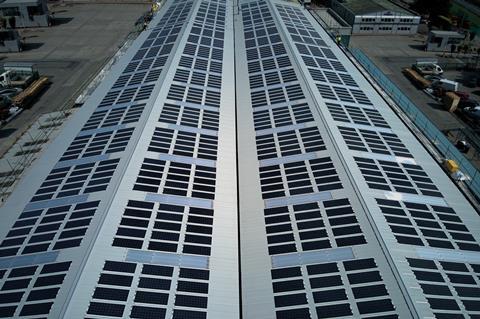Whether you are building from new, or refurbishing existing property, considering how to protect your investment against future performance requirements whilst making it an attractive proposition for tenants has become an imperative.

The stick
In December 2020, the government released the UK Energy White Paper, confirming its intention of requiring all rented non-domestic buildings to achieve an Energy Performance Certificate rating of B by 2030, with an interim of EPC C by 2027. Not only will this affect new buildings and lets, it also applies to existing ones. In fact, from 1st April 2023, a landlord cannot continue with a current let if their property has an EPC rating of lower than E.
Ensuring that your buildings are energy efficient is not simply a matter of compliance with these Minimum Energy Efficiency Standards (MEES), it also makes good business sense by reducing operational costs, improving internal comfort levels and making the property more attractive to tenants, as well as increasing its intrinsic value. Perhaps more importantly, it reduces the risk of assets becoming stranded through obsolete levels of performance.
The carrot
According to research published in September 2021 by Knight Frank, green-rated buildings command an 8-18% sales price premium. Meanwhile an analysis of research into ‘green’ rental premiums by Aviva showed an uptick of between 2% for early iterations of BREEAM, up to 24.5% for buildings constructed to BREEAM 2015. The Aviva report also highlights a greater risk of carbon transition obsolescence for industrial assets – a sector where there are huge opportunities to not only improve the building fabric, but also to generate renewable energy.
According to research carried out by the Investment Property Forum, insulating a previously uninsulated roof in an industrial building can result in a 60% saving on direct carbon emissions and a positive Internal Rate of Return (IRR) of more than 50% over 15 years. This is partly because industrial buildings generally have a very large roof area relative to their internal floor area, which is why simply adding insulation has such a significant impact. It also presents an often unused space which could support a solar array.

The BRE published a good practice guide in 2016 on installing solar PV on commercial buildings, which highlighted the fact that there was an estimated 250,000 hectares of south facing commercial roof space in the UK. The guide proposes that if photovoltaics were to be installed on all of these, they would have the potential to meet up to 50% of the UK’s electricity demand.
The solution
Clearly it is important to construct new buildings to a high level of thermal efficiency, and this will also be driven by the upcoming changes to Part L in June this year and the introduction of the Future Building Standards by 2030. However, it is with the existing building stock that the greatest impact can be had. Increasing levels of wall and roof insulation, improving air tightness, and adding photovoltaic panels are all relatively straightforward and cost effective ways of improving an EPC rating.
For example, using insulated panel systems to over-clad or replace building elements can provide a fast, safe and high-performance solution to improve energy efficiency, especially if a single skin metal or asbestos roof is being replaced on an industrial building. A combined insulated panel and PV system makes that all important EPC level B far more easily achievable. Furthermore, there are schemes available to fully fund the upfront capital cost of installing PV systems.
Act now to secure your assets
With the impending changes to MEES, energy security high on the agenda, and tenants increasingly looking for property that demonstrates ESG, it makes absolute sense to invest in futureproofing existing stock sooner rather than later.
Find out how Kingspan Quadcore PowerPanel can boost your building performance, supported by funding options through Rooftricity.





























No comments yet